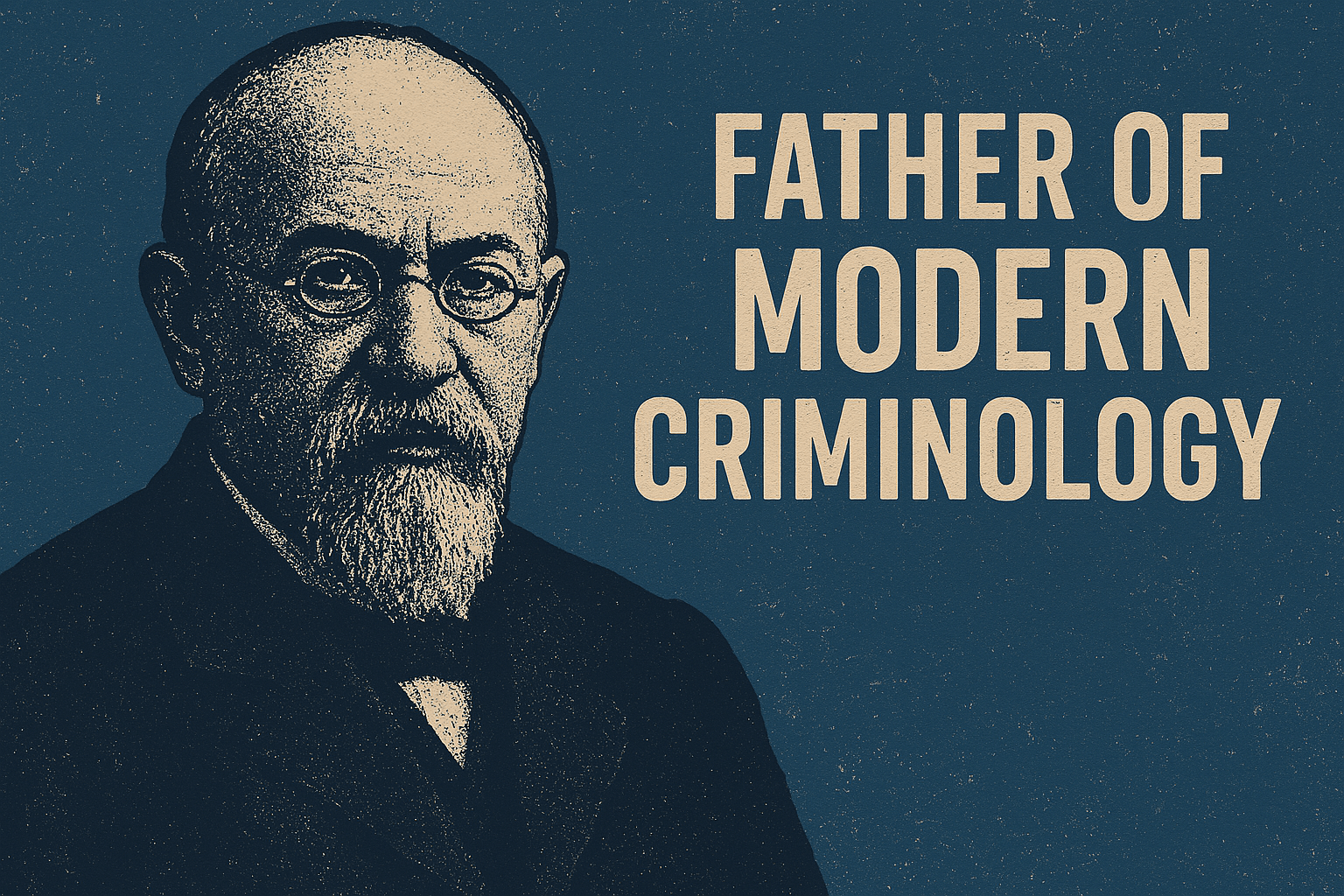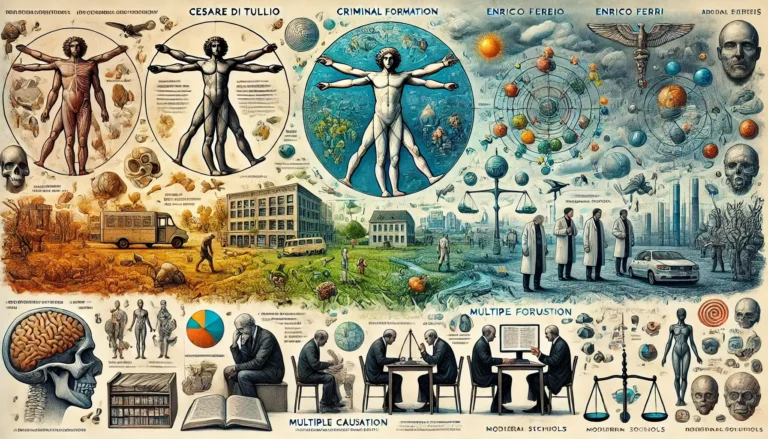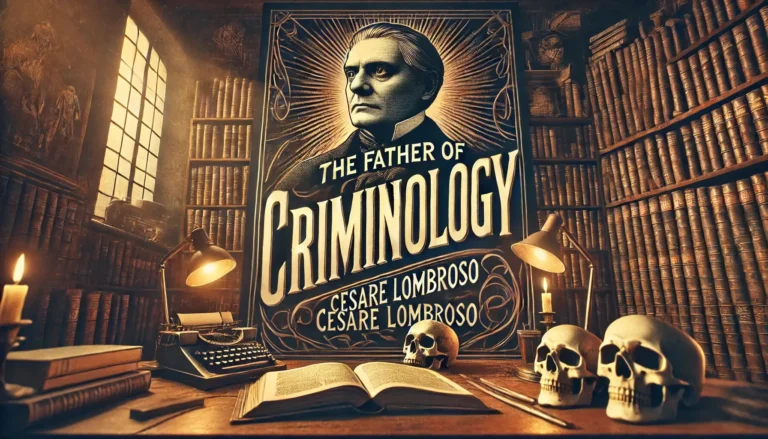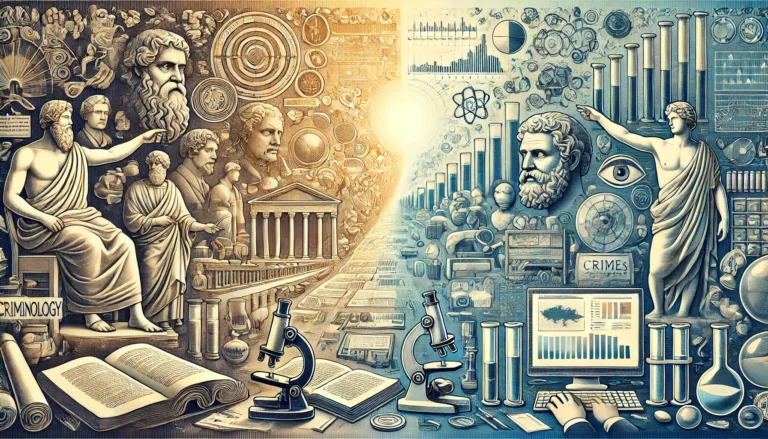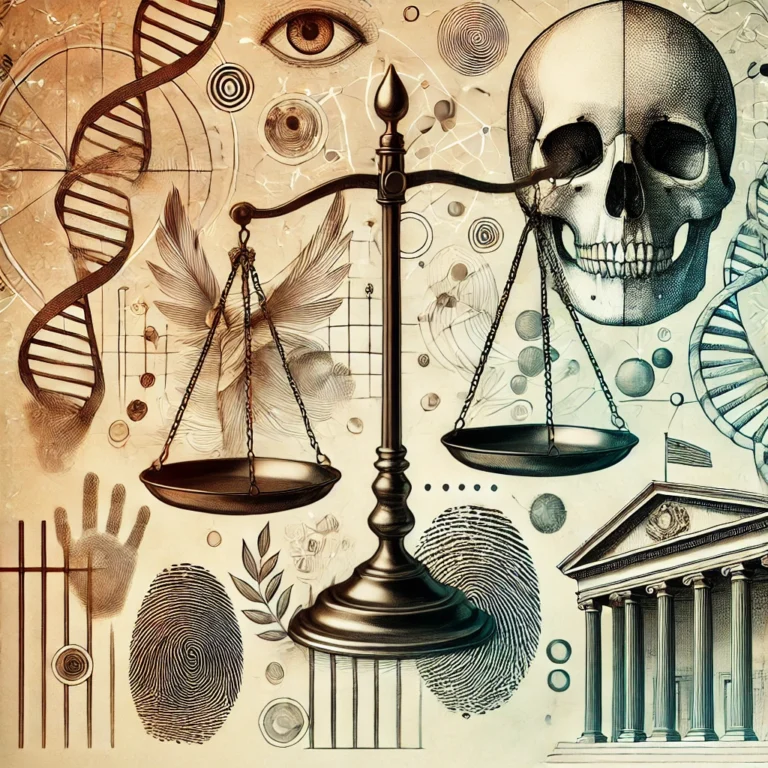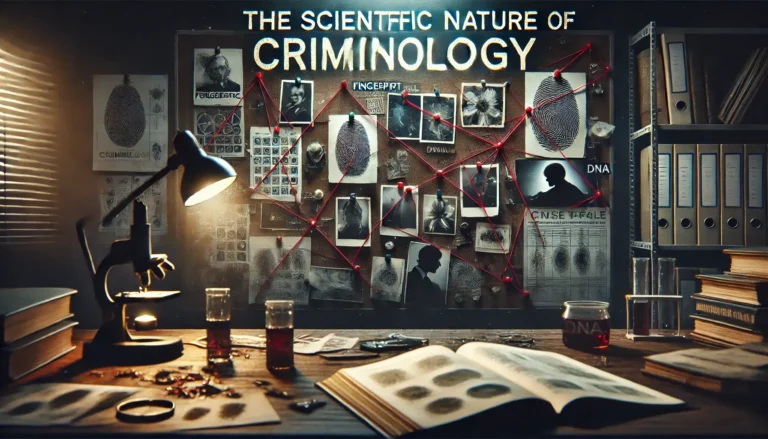The Father of Modern Criminology: Cesare Lombroso’s Legacy and Impact
Introduction
The study of criminology has undergone profound transformations over centuries, transitioning from philosophical musings to a scientifically grounded discipline. At the heart of this transformation stands Cesare Lombroso, often referred to as the “father of modern criminology.” His revolutionary approach, which applied scientific methods to the study of crime and criminals, challenged traditional perspectives and laid the groundwork for contemporary criminological theory. While controversial, Lombroso’s work marked a fundamental shift in understanding criminal behavior—not as a purely moral failing but as a phenomenon that could be studied, predicted, and understood through empirical means.
Historical Background of Criminology
Before Lombroso, criminology was primarily rooted in classical philosophy. Thinkers like Cesare Beccaria and Jeremy Bentham argued that crime was a result of rational choice, governed by free will. Their theories were based on the belief that people committed crimes to maximize pleasure and minimize pain, making punishment a necessary deterrent.
However, this classical perspective lacked empirical backing. There was no scientific examination of the criminal individual. As the 19th century progressed, society saw significant scientific advancements in biology, medicine, and psychology. These developments spurred interest in applying similar scientific principles to social sciences, including criminology.
Who Was Cesare Lombroso?
Cesare Lombroso was born in Verona, Italy, in 1835. Trained as a physician and psychiatrist, he served as a military doctor and later worked in asylums and prisons. His experiences shaped his perception of crime and its causes. He observed physical and psychological traits of criminals and began to theorize that criminality might have biological roots.
The turning point in Lombroso’s career came when he examined the skull of a notorious criminal and noticed what he believed were distinct physical abnormalities. This discovery led to the formulation of his most famous theory: the born criminal. Lombroso published his ideas in the groundbreaking book L’Uomo Delinquente (The Criminal Man), which became the cornerstone of modern criminological thought.
Lombroso’s Theories
The Born Criminal
Lombroso proposed that some individuals are “born criminals,” biologically predisposed to deviant behavior due to atavistic traits—primitive characteristics inherited from earlier stages of human evolution. He argued that these traits could be identified through physical markers or “stigmata,” such as large jaws, asymmetrical faces, long arms, and other anomalies.
Types of Criminals
Lombroso categorized criminals into several types:
- Born criminals: Individuals with innate tendencies toward criminal behavior.
- Insane criminals: Those who commit crimes due to mental illness.
- Occasional criminals: People who commit crimes due to circumstances.
- Criminals of passion: Individuals driven by strong emotions or moral outrage.
Biological Determinism
At the heart of Lombroso’s theory was biological determinism—the idea that biological factors determine behavior. He minimized the role of environmental and social influences, suggesting that criminal behavior could largely be predicted based on physiological characteristics. This viewpoint was both pioneering and problematic, as it opened the door to scientific inquiry but also to discrimination and pseudoscience.
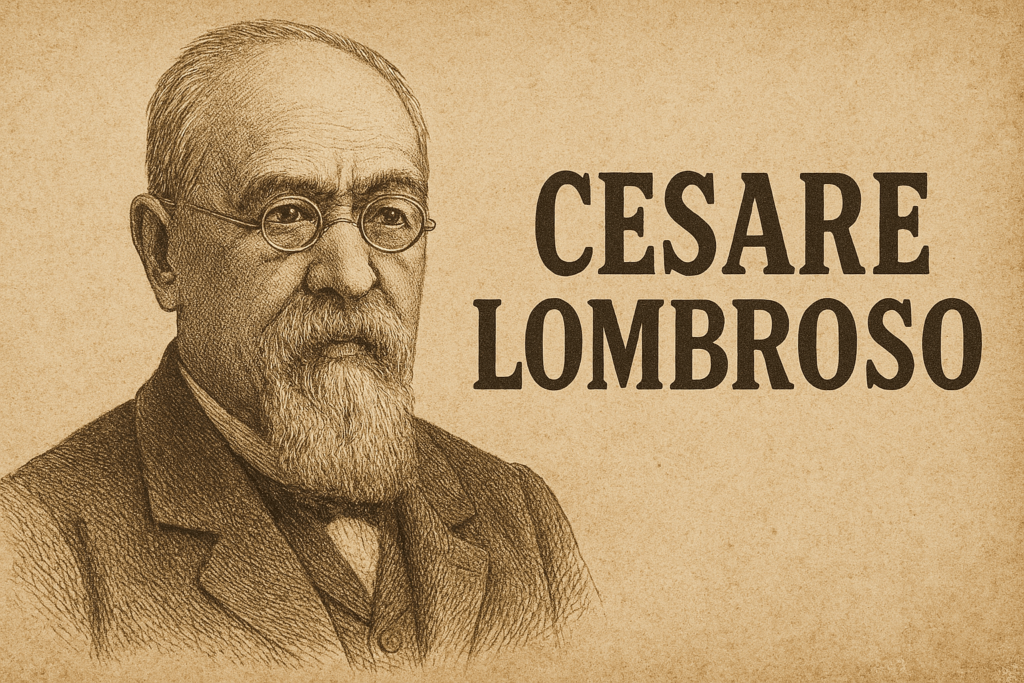
Impact on Criminology
A New Scientific Discipline
Lombroso’s work transformed criminology from a philosophical discourse into a scientific discipline. He advocated for empirical observation, systematic data collection, and interdisciplinary approaches that included medicine, anthropology, and psychology. This methodological shift laid the foundation for criminology as an academic field.
Influence on Penal Policy
Lombroso’s theories influenced criminal justice systems, particularly in Europe and the Americas. His ideas led to the development of policies aimed at identifying and segregating individuals deemed inherently dangerous. These policies emphasized treatment and rehabilitation for some offenders while advocating incapacitation for others.
Criticism and Reassessment
Scientific Criticism
Modern science has largely discredited Lombroso’s methods and conclusions. His sample sizes were small and unrepresentative, and his interpretations often lacked scientific rigor. Correlation was mistaken for causation, and the results were frequently biased by preconceived notions.
Ethical and Social Issues
Lombroso’s theories had troubling implications. His ideas were used to justify eugenics, racial profiling, and discrimination against marginalized groups. Critics argue that his work reinforced stereotypes and contributed to systemic injustice rather than preventing crime.
Modern Responses
Contemporary criminologists acknowledge the historical importance of Lombroso’s work while rejecting his deterministic views. Modern theories emphasize the complex interplay between biology, psychology, and environment. Research now considers socioeconomic status, education, family dynamics, and peer influence as crucial factors in criminal behavior.

Modern Criminology and Lombroso’s Legacy
Beyond Biology
Criminology has expanded far beyond Lombroso’s biological focus. Theories such as Robert Merton’s strain theory, Edwin Sutherland’s differential association theory, and Albert Bandura’s social learning theory highlight the importance of social structures, relationships, and learned behavior.
Persisting Contributions
Despite criticisms, Lombroso’s legacy persists. He introduced the concept of the criminal profile and emphasized the importance of observation and categorization. His work encouraged systematic data collection and inspired future generations to apply scientific methods to the study of crime.
Academic Recognition
Lombroso remains a central figure in criminological education. Most textbooks and university courses acknowledge his status as the “father of modern criminology,” while also presenting his theories within a critical framework. His contributions are discussed not for their accuracy, but for their historical significance and influence.
Contemporary Applications and Evolution
Forensic Psychology and Criminal Profiling
Modern forensic psychology owes part of its development to Lombroso’s early profiling techniques. Today’s criminal profilers use psychological and behavioral data to understand offenders, although they rely on evidence-based methods rather than physical traits.
Crime Prevention Strategies
Current crime prevention strategies involve early intervention programs that address risk factors such as poverty, family dysfunction, and mental health issues. These approaches reflect a more holistic understanding of crime, one that Lombroso’s work helped initiate, even if unintentionally.
Ethical Considerations
One of the most important lessons from Lombroso’s legacy is the need for ethical vigilance. Modern criminologists are cautious not to repeat the mistakes of biological determinism. Research must balance scientific inquiry with respect for human rights and diversity.
Global Perspectives
Lombroso’s Global Influence
Lombroso’s ideas were widely adopted across Europe, North America, and Latin America in the early 20th century. They influenced prison reform, criminal classification systems, and even educational policies. However, as his theories were debunked, many institutions distanced themselves from his approach.
21st-Century Criminology
Today’s criminologists work in a globalized, digital world. The field now includes cybercrime, international terrorism, and transnational criminal networks. Technological tools such as artificial intelligence, big data analytics, and DNA forensics reflect the continuing evolution of Lombroso’s initial goal: to understand crime scientifically.
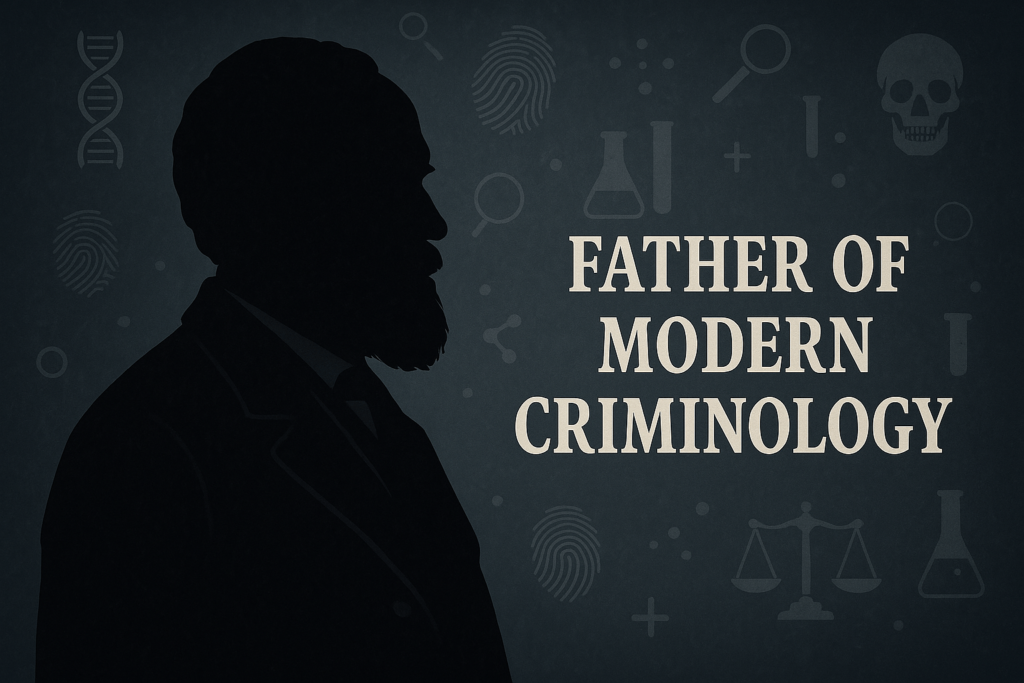
Conclusion
Cesare Lombroso, despite his flaws and controversial legacy, played a pivotal role in the birth of modern criminology. He shifted the field toward scientific inquiry and opened the door to interdisciplinary research. Though his theories are largely outdated, his influence is undeniable. As criminology continues to evolve, it builds upon his initial quest—to understand the roots of criminal behavior—while striving to do so with greater accuracy, inclusivity, and ethical responsibility.
By examining the life and work of Cesare Lombroso, scholars and students gain not only historical insight but also a deeper appreciation for the complexities of criminal behavior. His title as the “father of modern criminology” endures, not because his theories were perfect, but because they sparked a transformation that still shapes the discipline today.

